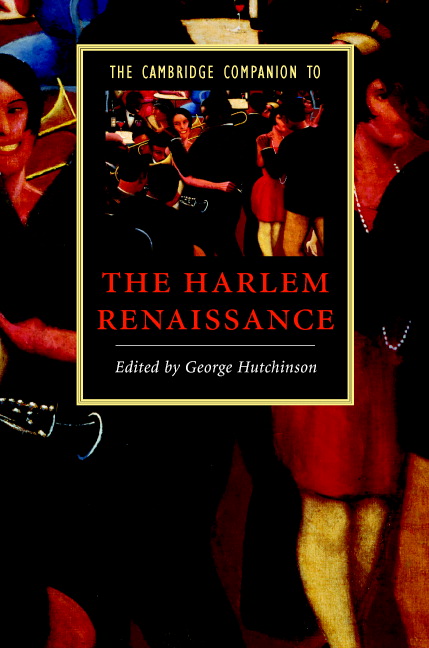
 Encyclopedia of the Harlem Renaissance
Encyclopedia of the Harlem Renaissance
This encyclopedia explores the origins, scope, legacy, and aesthetic dimensions of the Harlem Renaissance, including its literature, art, and music. It also examines the historical, political, and socioeconomic environment in which the movement emerged. Nearly half of its entries are biographical, covering figures such as actors, politicians, musicians, writers, and patrons.
Other entries address specific literary or theatrical works, productions, places, organizations, and periodicals. Additionally, topics like the Blues, the Federal Writer’s Project, and white patronage are discussed.
 The Cambridge Companion to the Harlem Renaissance
The Cambridge Companion to the Harlem Renaissance
This authoritative and engaging guide to the movement first discusses the historical contexts of the Harlem Renaissance, both national and international, presents original discussions of a wide array of authors and texts, and finally treats the movement’s reputation in later years.
American National Biography Online
An extensive, continually updated biographical encyclopedia published by the Oxford University Press. It includes detailed entries on all writers, poets, and other artists associated with the Harlem Renaissance, including W.E.B. Du Bois, Langston Hughes, Zora Neale Hurston, and many others.
Twayne’s Authors Series
This comprehensive online library provides detailed critical introductions to the lives and legacies of major Harlem Renaissance writers, alongside literary critical interpretations and discussions of their specific works.
Oxford Bibliographies: American Literature
Expertly selected and annotated lists of books, scholarly journal articles, and other sources, compiled by scholats and published online by the Oxford University Press.
Artists associated with the Harlem Renaissance are listed under Late 19th Century–End of WWII (however, Jessie Fauset is erroneously classified under the early nineteenth century).
The Cambridge History of African American Literature
Several chapters in this critical anthology examine W.E.B. Du Bois’s “Criteria of Negro Art,” offering a comprehensive overview of the literary traditions of African-descended peoples in the United States. The contributors emphasize the dual nature of each text discussed, presenting it both as an individual work of art and as a response to unfolding events in American cultural, political, and social history.
 The Handbook of African American Literature
The Handbook of African American Literature
This is the first comprehensive resource devoted to the analysis, interpretation, history, and appreciation of African-American literature. It includes a compilation of literary terms, ages, movements, periods, and cultural sources. The definitions provided offer substantive discussion and cite specific examples from the works of major critics, as well as major and minor writers, from the 1700s to the early twenty-first century.
A Companion to African American Literature
This guide offers a comprehensive chronological overview of African American literature from the eighteenth century to the beginning of the present century.
The chapter entitled “The Harlem Renaissance: The New Negro at Home and Abroad” examines Claude McKay’s works and their role in the formation of a new, transnational, and political subject, Langston Hughes’s travels and his cultivation of a New-World vernacular, and Zora Neale Hurston’s work as an anthropologist and folklorist.
Encyclopedia of African-American Writing
The comprehensive reference source highlights the role and influence of various African-American writers, their inspirations for creating poems, plays, short stories, novels, essays, and opinion pieces, and how these writings contributed to American culture.